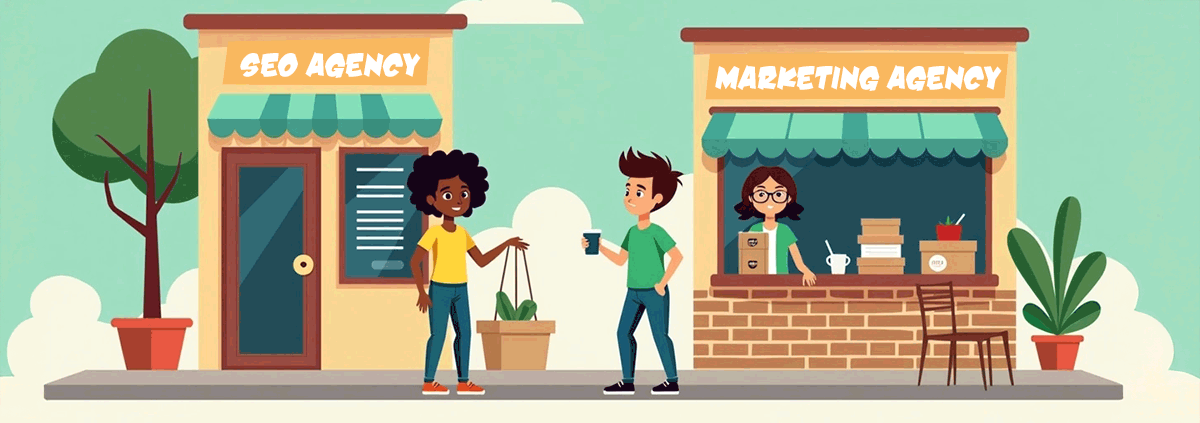Receive SEO Updates
| Thank you for Signing Up |


Maintaining and administering your own website can have a profound effect on SEO, but in this article we are dealing with a phenomenon that many of the best SEO experts are unaware of: Orphan Pages
Ready To Boost Your SEO?
What Are Orphan Pages?
Orphan Pages are pages existing on a website without any other page linking to them. Users can’t find them through the website journey as there is not a single link in the entire website pointing to that page. This is why they are also known as Non-Client-Facing pages. However, most Orphan Pages can be found by Search Engines. Most people think that they only can be found if they were linked to — or if external websites link to them. But Orphan Pages can be found by Search Engines through many different ways. Sometimes they could have been submitted for indexation and then never linked to again. But mostly they are being indexed through the sitemap that is being updated once a page has been created. Once Google crawls the sitemap, it finds the page and indexes it. And that’s basically what an Orphan Page is: although it exists on the web, there is no link provided from its own website (other than the sitemap). As a result, the website does not pay any attention to these pages and they become what in the SEO world is called Orphan or Orphaned Pages.Impact On SEO
Orphan Pages are bad for SEO. The reason is relatively easy to understand. Search Engines like Google assume that a page that doesn’t get any links from within its own website has no importance. That would not be so bad at first, as most Orphan Pages have also no importance for the company either — they are often created for the very reason that they have been ignored. Orphan Pages also have a negative effect on the entire website from an SEO standpoint, as Google punishes the entire website because of their existence. Therefore, Orphan Pages are overall, considered negative SEO.Why Are Ophan Pages Bad For SEO?
Google does not like it when pages with no relation to others exist on a website. This is because, in the past, people have tried to hide pages from Google this way. This tactic has often been used by so-called Black Hat SEOs — those who use tricks that violate Google’s Guidelines to improve keyword rankings. Google assumes that the web administrator does not want a user to find these pages on the website. For some reason, however, they still exist. Previously, this technique was also known as Ghost Pages — a Black Hat Technique of hiding pages in a website that only Search Engines should find, but they would be invisible to the user. In summary, Orphan Pages should be avoided at all costs.How to Identify Orphan Pages?
Unfortunately, crawling your own website with crawlers will not help in identifying Orphan Pages because the crawler would only follow existing links of your website. To identify Orphan Pages, SEO experts have to look into the Search Engine Result Pages (SERP) of Google for that website and compare them with the internal crawl results. This method is called URL mapping and is a common SEO process.How Do Orphan Pages Occur?
Often, Orphan Pages come into existence because the company no longer wants specific pages on their website, but on the other hand still want to retain them. This can be, for example, an old blog category that you don’t want to be client-facing. By switching off this category, the blog posts are no longer visible on the website. However, they still exist under different URLs. The simpliest way is when companies remove certain categories from their website such as from the menu. But leave the pages intact. The problem now is that they are no longer linked from the website — thus: the birth of Orphan Pages.How to Avoid Orphan Pages
It’s understandable that you do not want to delete old posts because you still want to maintain their SEO trust. At the same time, you also want the old content to be client-facing. Instead of transforming them into Orphan Pages, it is advisable to link to them from somewhere on the website. Please note that a single link on one page is not enough because Google will still smell the rat.What to Do With Pages You Don’t Want
In the past, it has proven to be a good tactic to put non-client-facing pages within the footer. You will often see Contact Us, About Us, Privacy Policy, and other pages in the site footer. This ensures that the link will continue to appear on every page of the website, but users usually hardly notice the footer, if ever. In addition, an archive homepage/entry page can be generated, which can list all the unwanted sections of the website and links, functioning similarly to a standard HTML sitemap page. This way, Orphan Pages are avoided, and the existing pages will continue to receive their SEO trust.Tell us more about your business and we’ll tell you how we can help!
GET IN TOUCH!Receive SEO Updates
| Thank you for Signing Up |



 by
by 


if there is a link to a page in the footer eg to Page 'X', and then a link in Page 'X to an other page Page 'Z' and both shared links with other pages and to other pages, would Page 'Z' still be considered an orpahn page as there is no link to it in the menu or footer?
Hi Paula, Can you elaborate what you mean by "unlisting"? Thanks.
This is a very helpful and interesting article.
Will "unlisting" a webpage result in an orphan page?
Wondering why you are making claims, with no source of evidence from Google to back it, or any tested examples?
I still see many websites doing well with this strategy.
a. They have quality, useful pages that are non orphaned.
b. They have repetitive, terrible pages in the sitemap.
c. Their good pages, rank for hard to rank terms.
d. Their orphaned pages rank for the long tail, and don't impact the rankings of the main pages.
This is my observed experience.
If yours is different please demonstrate.
Thank you guys! That was a helpful article.